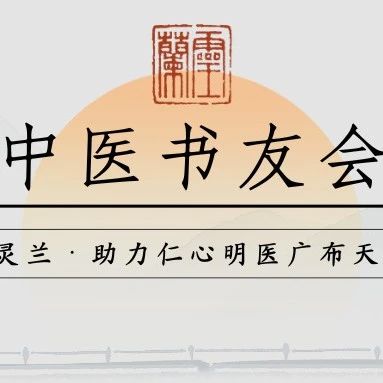
Chinese Medicine Book Club Issue 2479
Daily updates to accompany the growth of TCM practitioners
Introduction:Angelica Sinensis (Dang Gui) has a sweet and spicy flavor, is warm in nature, promotes blood circulation and alleviates pain, and can be used for various conditions of blood stasis and pain. But would you dare to use it in a dosage of 60g? (Editor/Ning Jiajia)

The Use of Angelica Sinensis in Treating Lower Limb Venous Thrombosis
Author/Yin Huaihe Organized by/Xu Yuan
Angelica Sinensis (Dang Gui): Sweet, spicy, slightly bitter, warm in nature, enters the Liver, Heart, and Spleen meridians. Functions: Nourishes blood, regulates menstruation, promotes blood circulation and alleviates pain, moistens the intestines and promotes bowel movements. The “Shen Nong Ben Cao Jing” records that Angelica Sinensis is used for “women’s menstrual disorders, various sores and ulcers, and traumatic injuries”; the “Ben Cao Gang Mu” states it is used for “headaches, abdominal pain, moistening the intestines and stomach, treating abscesses, expelling pus and alleviating pain, harmonizing and nourishing blood.” Case Example: Patient Bai, female, 46 years old. Suffering from lower limb venous thrombosis, her leg is swollen and leaves a dent when pressed, her face also occasionally shows swelling, and her lower limbs feel heavy and swollen. The tongue has a thin coating, and the pulse is irregular. According to Yin Lao, “veins are collaterals, arteries are pulses,” this patient should promote blood circulation and unblock the collaterals. The prescription is as follows:Angelica Sinensis (Dang Gui) 60g, Chicken Blood Vine (Ji Xue Teng) 30g, Huang Bai (Phellodendron) 15g, Cang Zhu (Atractylodes) 12g, Sheng Yi Yi Ren (Job’s Tears) 30g, Niu Xi (Achyranthes) 10g, Zi Hua Di Ding (Viola) 30g, Zao Jiao Ci (Soapberry) 30g, Si Gua Luo (Luffa) 10g, Hong Hua (Safflower) 9g. The prescription emphasizes the use of 60g of Angelica Sinensis (Dang Gui) (the patient is from the north, so the dosage can be larger than that for southern patients) as one of the key medicines for efficacy.Angelica Sinensis has a sweet and spicy flavor, is warm in nature, promotes blood circulation and alleviates pain, and can be used for obstructed meridians and various conditions of blood stasis and pain. Paired with Chicken Blood Vine to invigorate blood and relax the tendons, and Soapberry to invigorate blood while also reducing swelling and detoxifying, its spicy and warm nature is quite sharp. The “Ben Cao Jing Shu” states that its sharpness can directly reach the disease site, making it a medicine for treating abscesses and carbuncles that have not yet ruptured. The patient’s condition is in the lower limbs. Traditional Chinese Medicine believes that the dampness and evil in the lower jiao obstructs, leading to leg swelling. If it persists, it can transform into heat, causing the skin of the affected limb to become dark red, and the local skin temperature is higher than the opposite side. Therefore, the prescription includes the Four Wonderful Powder (Huang Bai, Cang Zhu, Niu Xi, Sheng Yi Yi Ren) to clear damp-heat from the lower jiao, combined with blood-invigorating herbs to eliminate dampness and stasis. Luffa is a key herb for unblocking the meridians, and Viola clears heat, detoxifies, and reduces inflammation and masses. After treatment, the patient reported satisfactory results, with significant reduction in lower limb swelling. Yin Lao’s use of Angelica Sinensis to invigorate blood and unblock the collaterals, with a dosage reaching 60g, caused no discomfort to the patient, demonstrating Yin Lao’s boldness in prescribing, which can be said to be “high skill and great courage.” I once asked,Angelica Sinensis is warm in nature, and now that the weather is getting hotter, could a large dosage cause issues due to its warming nature? Yin Lao replied, “When there is illness, the medicine targets the illness.” I also asked, “Angelica Sinensis is moistening and can promote bowel movements; does using it in large amounts often lead to loose stools for patients?” He replied, “No issues.” I have now confirmed in my heart that as long as I recognize the diagnosis, I can confidently and boldly use the medicine. Yin Lao’s note: Seeking a teacher is mainly to learn from experience. If one only learns from books, then even a liberal arts teacher can teach medicine. The use of 60g of Angelica Sinensis is not my invention, but rather learned from others. During the Cultural Revolution, there was a saying in the research institute’s verified prescriptions.
Recommended Reading
Articles learned from comments: Jiao Shude discusses Angelica Sinensis and Peony Decoction
Clinical application experience of Angelica Sinensis and Peony Decoction
|
Copyright Statement
Submission Email [email protected] |

